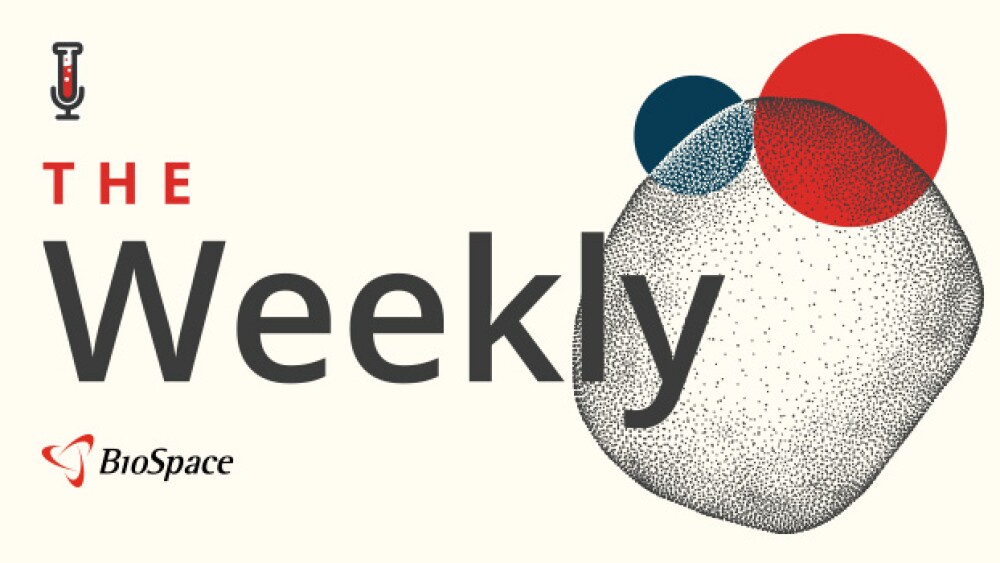Mixed headlines have plagued the cell and gene therapy space of late. We believe that a renewed case of optimism is not only warranted but essential if these therapies are to reach their full potential.
Recent headlines have spotlighted challenges in the cell and gene therapy sector, from trial suspensions and product holds to delayed approvals and increased scrutiny of clinical data. While these developments have understandably raised important questions about the use of cell and gene therapies, the field is making significant underappreciated progress.
We, a coalition of stakeholders spanning patient advocacy, clinical foundations, nonprofit organizations, and biopharmaceutical innovation, believe a renewed case of optimism is not only warranted but essential. Reaffirming confidence in cell and gene therapy (CGT) is necessary for the lives of the patients we collectively serve and for the broader healthcare ecosystem that depends on transformative therapies.
Meet the Authors
|
US Government and Patient Support
To fully realize the promise of cell and gene therapies, we need a predictable FDA approach with bold, visionary leadership. As Commissioner Marty Makary recently noted at a conference in Washington, D.C., “Maybe in rare diseases, or certain incurable conditions, you’ve got to tailor the approval process to the condition where the application is sought for.”
We welcome this acknowledgment and strongly support the development of patient-centric, disease-specific and adaptable regulatory pathways. The United States has long led the world in biopharmaceutical innovation, supported by a strong FDA and a commitment to regulatory excellence. Building on this foundation, continued collaboration among government, patients and innovators will be key to ensuring that policies reflect the promise of modern science and deliver for those who urgently await treatments.
“We are absolutely committed to making sure that the U.S. remains the center for cell and gene therapy research around the globe,” Health Secretary Robert F. Kennedy Jr. said in a video posted the day after a roundtable discussion with various CGT stakeholders at the FDA this past summer. “We understand that this kind of research is absolutely consistent with the Make America Healthy Again agenda.”
Recent patient deaths involving the use of AAV-based gene therapies have underscored the inherent risks of treating severe genetic diseases. But the FDA has continued to apply a rigorous yet balanced approach to risk-benefit assessment and has shown its continued support with public listening meetings along with the recent release of a trio of new draft guidances aimed at assisting CGT developers and shaping the future of clinical development in the space. These are positive developments for patients.
For parents who are confronting life-threatening or severely disabling conditions for their children with no or very limited treatment alternatives, the potential for a one-time, durable therapy often far outweighs the risks. To date, thousands of patients have made this choice and have been treated with AAV-based products, several of which are now commercially available and delivering meaningful clinical benefit. We also see these patients and their families as pioneers who can share their personal CGT experiences and outcomes to spread the word and further promote adoption of these novel therapies.
The field continues to optimize vector design, dosage and tissue targeting to improve safety and efficacy. New delivery platforms, including non-viral and re-dosable approaches, are emerging and reinforcing the sector’s commitment to learning from each setback to drive safer, more effective treatments.
While the FDA’s promises and new initiatives are encouraging, those promises must turn into regulatory actions to keep pace with our advancing science and address the standing unmet needs of our patients.
An Inflection Point for CGT?
Signs of renewed optimism are emerging across the CGT landscape, signaling a potential turning point for the sector. After significantly trailing the closely watched XBI biotechnology index in 2023 and 2024, publicly traded CGT stocks, spanning multiple technologies, disease areas, and stages of development, are now tracking closely with the index.
The rebound reflects a convergence of clinical, regulatory and market tailwinds that are renewing investor confidence. Over the past 12 months, several high-profile programs have delivered positive late-stage data, including gene therapies for Huntington’s disease, Duchenne muscular dystrophy and rare metabolic disorders. Commercial launches by sector pioneers, though still navigating first-mover challenges, are beginning to show durable revenue potential. Once little more than a niche experiment, CGT is now at a leading edge of the biopharma innovation pipeline with growing prospects for near-term value creation.
Making waves in mainstream media, the story of “Baby KJ” has become emblematic of what the field can already accomplish—and a preview of the bigger impact that is possible. Earlier this year, researchers at the Children’s Hospital of Philadelphia developed and delivered a bespoke gene-editing therapy for an infant with CPS1 deficiency in a matter of months. After receiving FDA clearance to proceed, the team administered the treatment—marking the first reported use of an individualized CRISPR-based therapy for this lethal metabolic disorder.
KJ has since returned home and is progressing well, and his case has catalyzed national interest in how highly personalized therapies could be scaled through standardized platforms. The FDA recently reinforced this direction by unveiling a proposed “plausible mechanism” pathway, designed to streamline regulatory review for customized, small-population gene therapies and reduce time to treatment for patients with ultra-rare diseases. This pathway, if implemented, could allow bespoke therapies to move from concept to clinic more efficiently while maintaining rigorous safety oversight.
The FDA announced in June that it was removing Risk Evaluation and Mitigation Strategies (REMS) and appropriately easing monitoring requirements for the approved CAR-T therapies for blood cancers. Together, these updates reduce the burden on doctors and patients and should expand access to CAR-Ts beyond the 20% of eligible patients who currently receive the treatment.
Health systems are also starting to modernize. The administration announced in July that 33 states, the District of Columbia and Puerto Rico have chosen to participate in the Cell and Gene Therapy Access Model. The Centers for Medicare and Medicaid Services has negotiated outcomes-based payment agreements with the companies with approved sickle cell disease therapies on behalf of state Medicaid programs. It is the most substantial federal government initiative to date to modernize payment systems for cell and gene therapy. Time will tell, but this voluntary program could be a model for other disease areas in the future.
A Rapidly Advancing CGT Pipeline
The CGT pipeline is full of promise for both patients and investors. CAR-T therapies to treat intractable autoimmune diseases are progressing in mid-to-late clinical stage, while CAR-T is becoming available to more blood cancer patients earlier in the treatment journey. The first two cell therapies were approved last year for solid tumors, and there are more than 400 clinical trials ongoing globally to test more approaches to solid tumors with early positive data on intractable tumors like glioblastomas.
On a smaller scale, gene therapy is advancing rapidly for inherited rare disease. In a life-threatening heart condition called Danon disease, for example, data from an early-stage study, as published in the New England Journal of Medicine, showed patients who would otherwise face heart transplant or death—boys and young men typically die by age 20—remained clinically stable after a one-time AAV-based gene therapy.
Similar momentum is emerging in other genetic disorders. In Duchenne muscular dystrophy, recent gene-transfer approaches have demonstrated improvements in functional outcomes and biomarkers, marking meaningful progress in a condition long considered intractable. And in sickle cell disease, the approval of the first gene-editing therapy has shown that a one-time treatment can eliminate vaso-occlusive crises for many patients, highlighting the transformative potential of next-generation genetic medicines.
This advancing pipeline is feeding into a quickly expanding market. Based on analyst consensus forecasts, the CGT market is expected to grow from $8.4 billion in 2024 to $54.4 billion in 2030, a compound annual growth rate of 36.5%. The number of CGT blockbuster products—those with annual global sales of more than $1 billion—on the market is expected to hit double digits by 2030, while an additional fifteen CGT products are predicted to reach more than $500 million in annual sales, highlighting the strong commercial opportunity in the years ahead.
Large biopharmaceutical companies continue to be growth and commercialization engines for CGT. A majority of the world’s largest biopharma companies—including AbbVie, Bristol Myers Squibb, Eli Lilly, Gilead, Pfizer, Novartis, and Roche—have made strategic investments in cell and gene therapy platforms, partnerships, or acquisitions in the past two years. Several leaders in the space—among them AbbVie, Bristol Myers Squibb, Eli Lilly and Gilead—have collectively spent more than $5 billion on acquisitions of small CGT companies pioneering in vivo and next-generation delivery approaches for prevalent diseases.
These advances not only signal renewed momentum in the sector, but also a new chapter in medicine that can transform many more lives—but only if we have the foresight to invest, the courage to innovate, and the commitment to ensure access for all who stand to benefit.














